2016 | Installation with 2 large wall leaning glass cabinets with doors and shelves, 6 free-standing wooden display plinths, 1 framed and 30 unframed photographs on archival paper (Hahnemühle Photo Matt, 200 gsm, acid-free), white gauze bandages, acrylic sheets, graph paper, sand paper, tracing paper, jute string, masking tape, silica gel, sponge, plastic, 4 books, 3 plaster of Paris casts, 3 digital data loggers, 3 magnifying glasses with LED lights, 2 mirrors, 2 collages, 1 drawing, 1 acrylic case, 1 hardboard clipboard, and 1 stone | Installation dimensions: variable | Photos: Somerset House, London
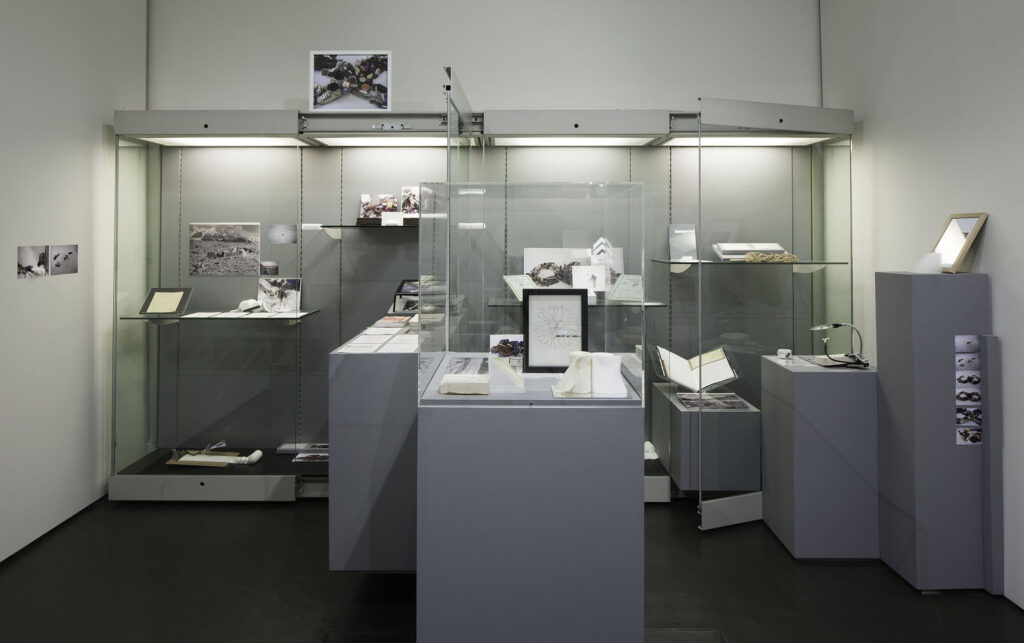
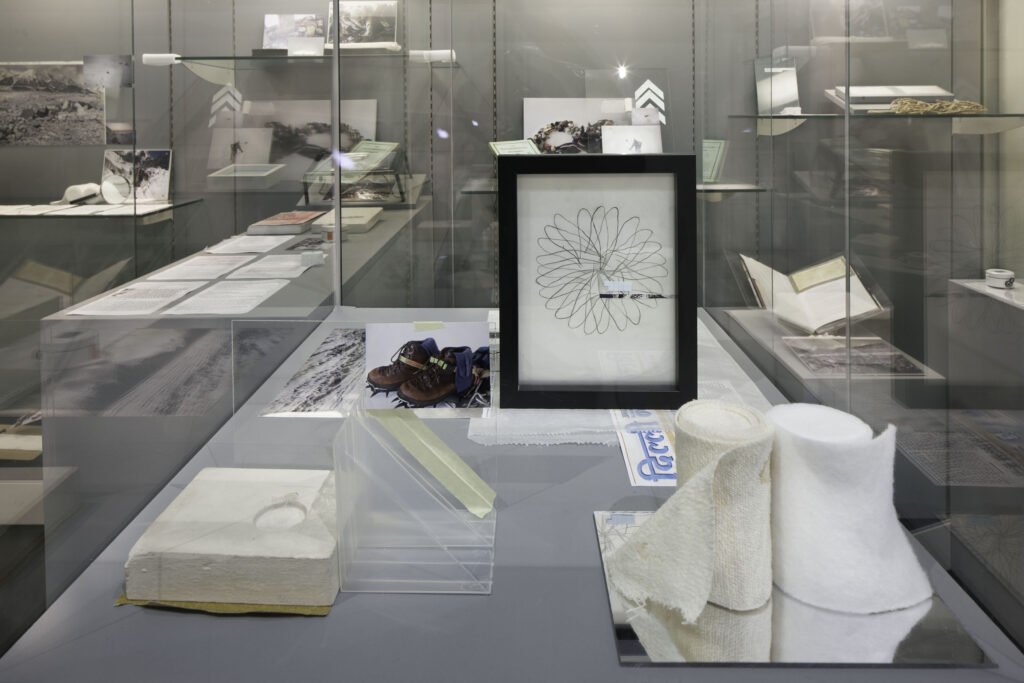
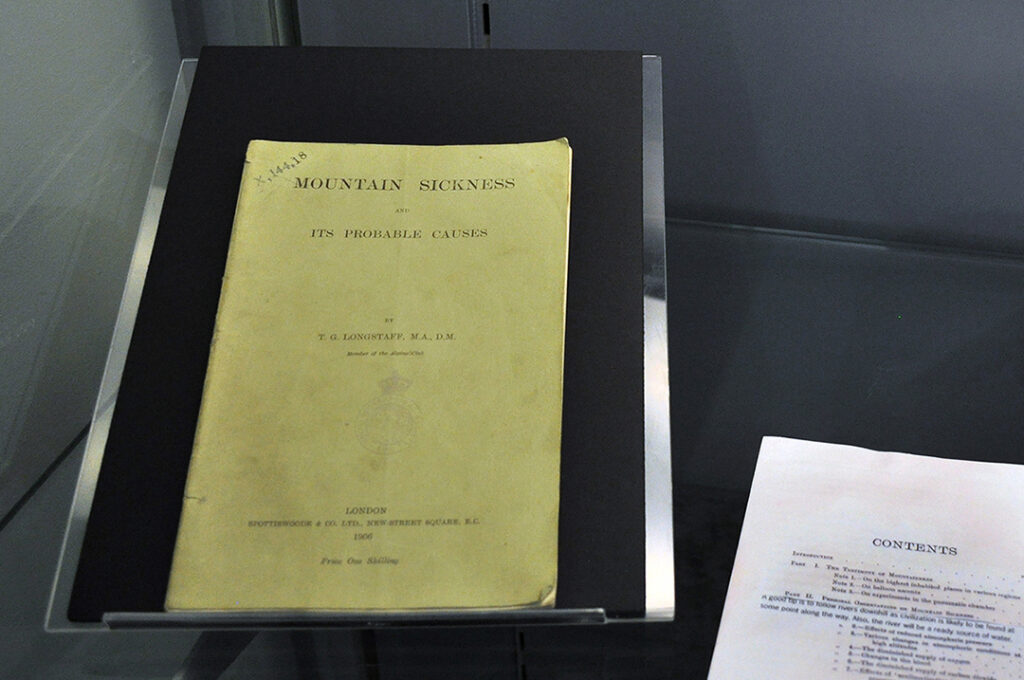
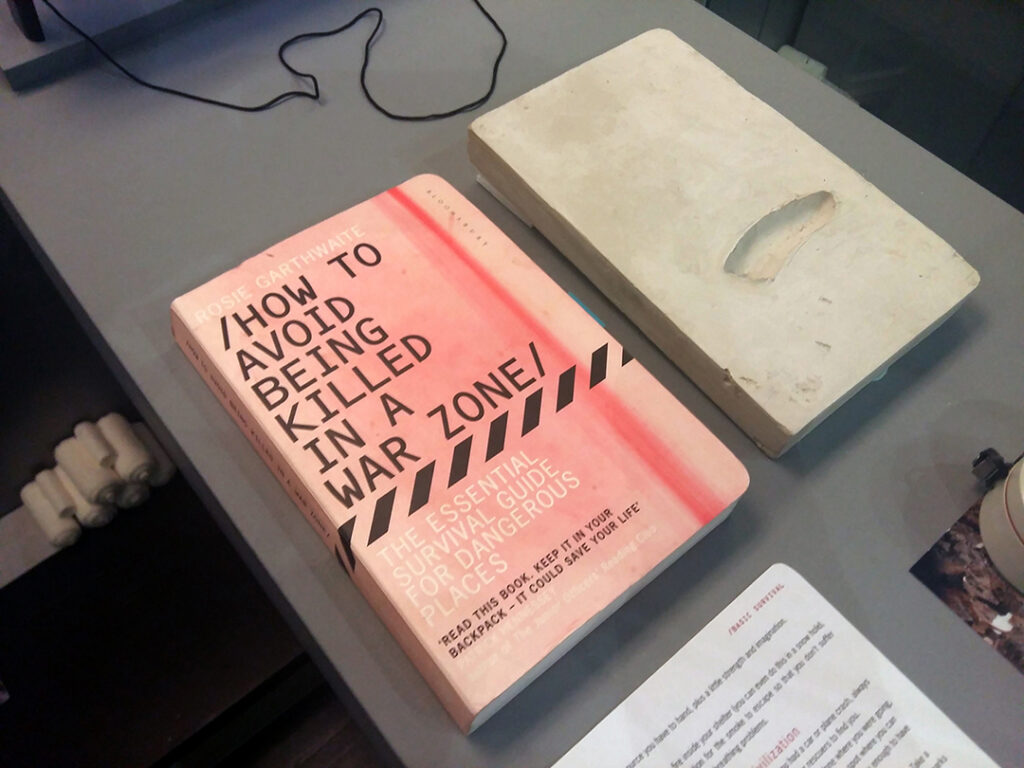
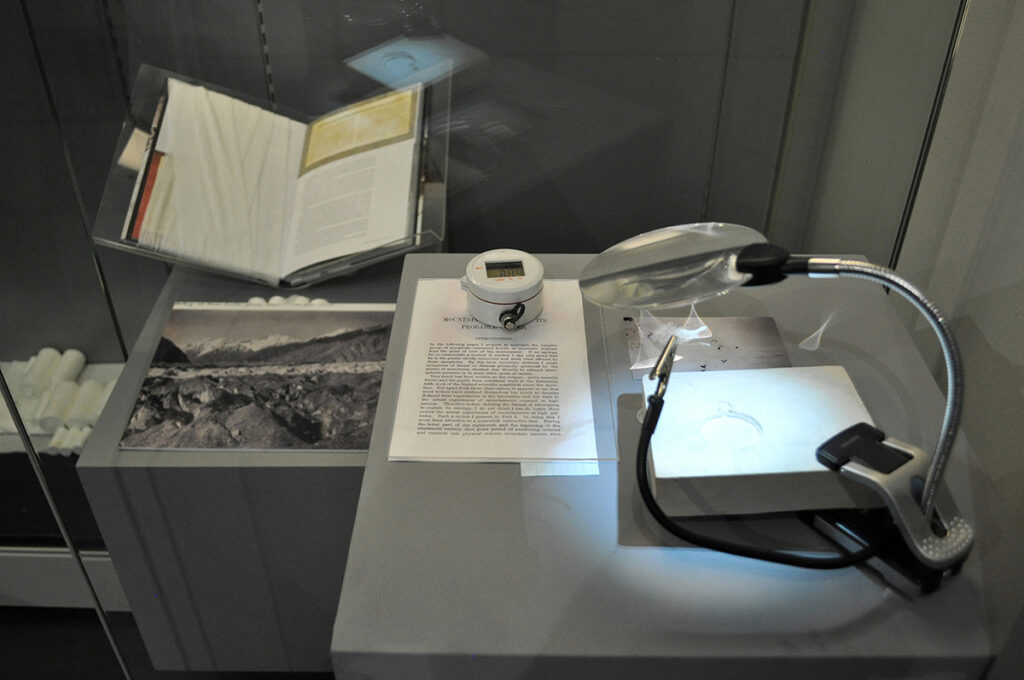
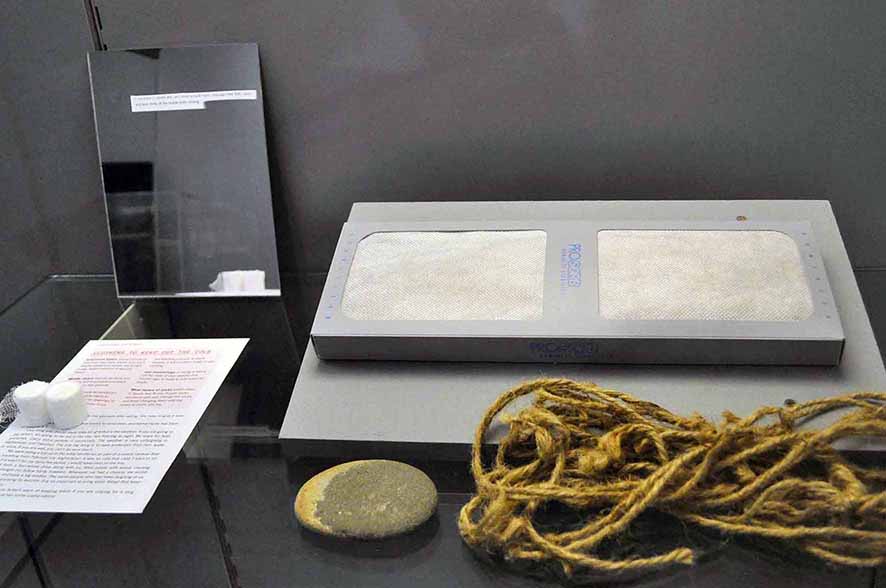
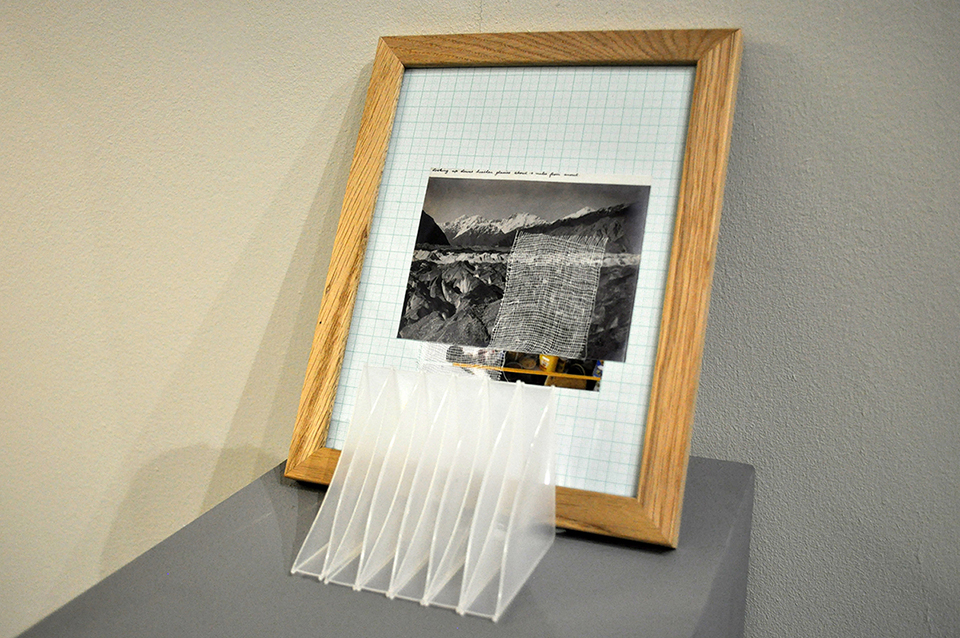
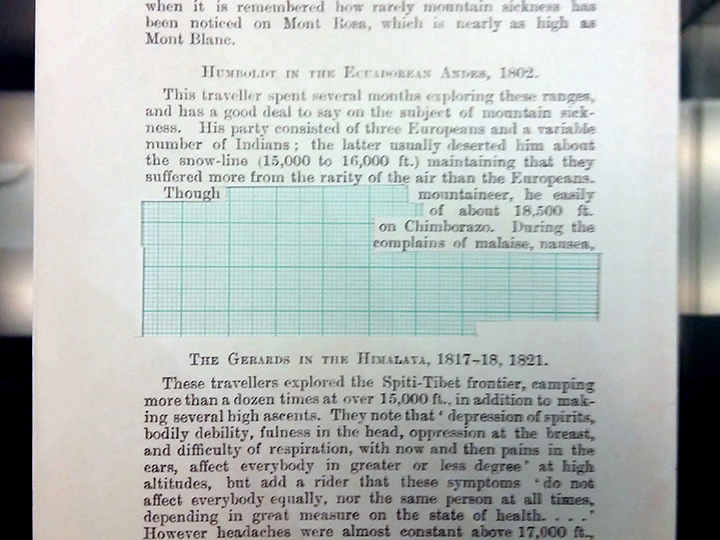
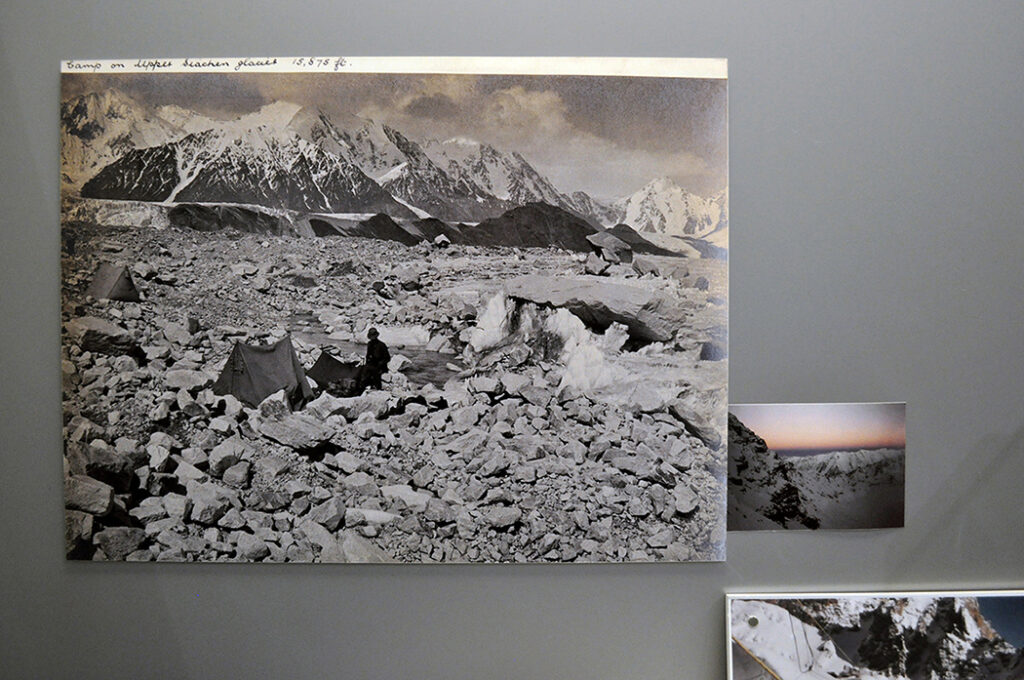
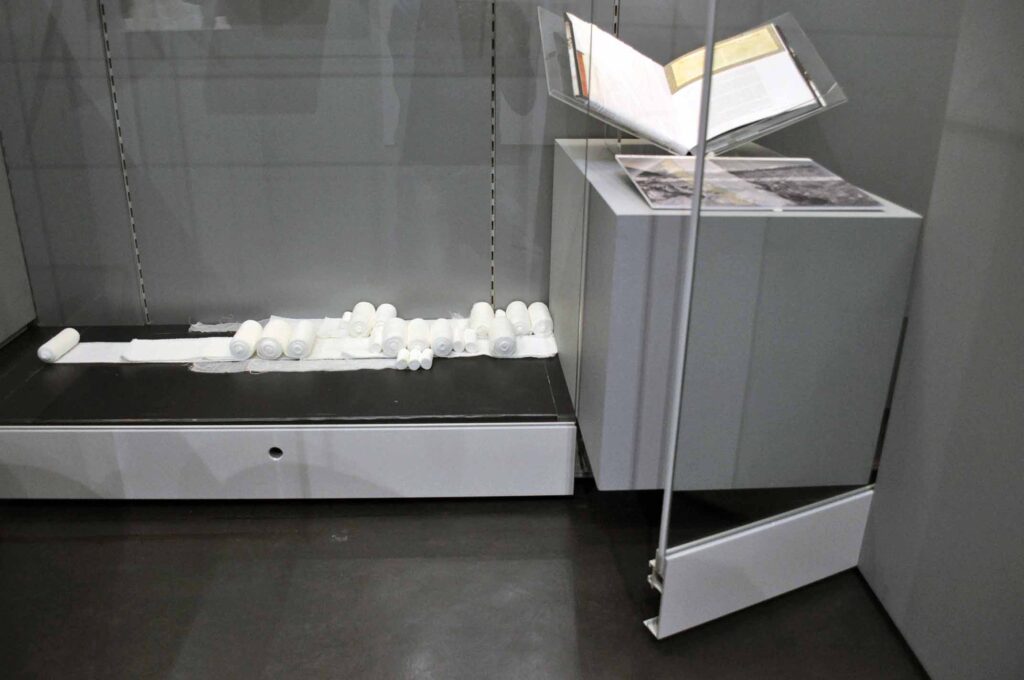
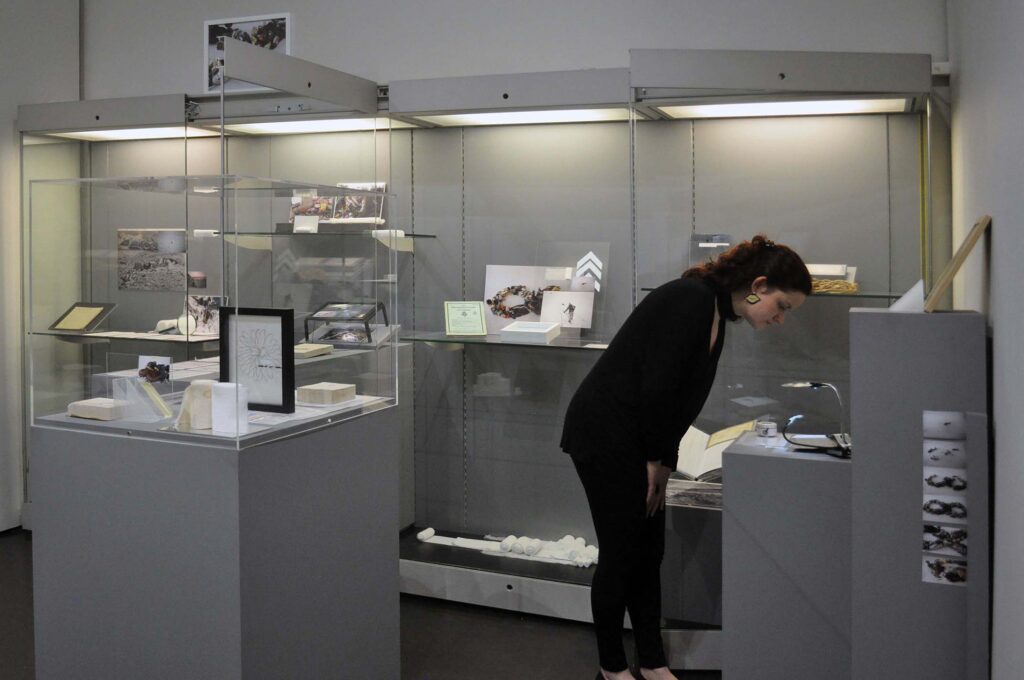
Mountain Lassitude, is an installation of two large wall leaning glass cabinets with doors and shelves, six free-standing wooden display plinths, one acrylic case, four books and three plaster of paris casts. One framed and thirty unframed photographs on archival paper, two collages, and one drawing were also part of the work, along with graph paper, sandpaper, tracing paper and several white gauze bandages and acrylic sheets. The installation also included jute string, masking tape, silica gel, sponge, plastic, three digital data loggers, three magnifying glasses with LED lights, two mirrors, one hardboard clipboard, and one stone.
The title is borrowed from a British Major, Hon. Charles Granville Bruce, who invented the term, ‘Mountain Lassitude’, which means diminution in the strength of a man due diminished atmospheric pressure. The artist came across this term in a handbook at the Royal Geographic Society in London. This booklet was titled, ‘Mountain Sickness and its Probable Causes’ by Tom George Longstaff and published in 1906. This finding and the artist’s previous audio/video, “If it would only end…”, 2009 were the starting points to investigate the physical and political nature of the Siachen Glacier before it became a conflict zone in 1984.
There are two more vital elements that contributed to the labyrinth of Mountain Lassitude. One of them being, a testimony by Sachin Bali, a Siachen officer who lost some of his fingers and toes, due to frost bite he endured on the glacier during 2002-03. The second component was the chapter, ‘Surviving Extremes / Coping to keep out the cold’from a book, ‘How to avoid being killed in a War Zone’ by Rosie Garthwaite, published in 2011. The juxtaposition of these three narratives, documented in different times, under specific political conditions, situate themselves on a common factor of extreme altitudes. An individual’s way to survive draws parallels and questions guidebooks, thus presenting the gaps that exist between the personal and the institutional.
Mountain Lassitude, was developed during Baptist Coelho’s 2015-16 Leverhulme Artist-in-Residence, supported by and at the Department of War Studies, King’s College London. The residency was also supported by Leverhulme Trust, Cultural Programming at King’s College London and Delfina Foundation, UK. In 2016, the installation was first exhibited as part of the artist’s three-person solo exhibition, Traces of War at Somerset House, London. The exhibition was curated by Vivenne Jabri, Cécile Bourne-Farrell.